#visual library
Explore tagged Tumblr posts
Text

Current state of my visual library, seen from inside Allusion.
The moon face eludes me, though. No idea who drew that.
12 notes
·
View notes
Text


They have so much lore together.....
#character musings#legs madej#silent j#doctor fear#night night bergara#my art#image.png#visual library#bfucu#watcher#any dates here are day first month second btw#frequently bought together DO NOT SEPARATE....#the sitcom that exists in my mind about their college years is everything to me#Sleepless art#artists on tumblr
15 notes
·
View notes
Text








I have been drawing flowers
5 notes
·
View notes
Text
Why a Visual Library is the Backbone of Every Strong Brand
In the age of digital transformation, consistency is everything. Whether you're a startup or a global corporation, your brand identity needs to shine through every touchpoint—on social media, websites, advertising, and internal communications. That’s where a Visual Library comes into play. It's not just a folder of logos and images; it's the living, breathing core of your brand’s visual identity.
If you're looking to build a memorable, unified brand presence, companies like Brandkit are making that process easier and more efficient. With the right tools in place, your brand assets can be streamlined, accessible, and beautifully organized.
Let’s dive into what a Visual Library is, why your organization needs one, and how you can integrate it with a modern Digital toolkit and a powerful brand portal to elevate your brand game.
What is a Visual Library?
A Visual Library is a centralized collection of your brand’s visual assets. This includes:
Logos and icons
Color palettes
Typography styles
Marketing graphics
Brand photography and video
Templates and social media assets
Think of it as the master archive of your brand’s visual DNA. When your designers, marketers, partners, or agencies need assets, the Visual Library is the go-to source. It's about accessibility, consistency, and speed.
Why Every Brand Needs a Visual Library
1. Consistency Across All Channels
Visual consistency builds trust. If your social media posts look drastically different from your website or print materials, it confuses your audience. A Visual Library ensures that everyone working with your brand uses the same assets, styles, and formats.
2. Efficiency for Your Team
Time is money. Searching through emails or local folders for the latest logo wastes valuable hours. With a properly organized Visual Library, your team spends less time hunting down files and more time creating impactful work.
3. Empowering External Partners
If you work with freelancers, media partners, or agencies, giving them access to a comprehensive brand portal ensures they have everything they need at their fingertips. No more back-and-forth emails. Just clean, secure access to brand-approved content.
How Brandkit Makes Visual Libraries Smarter
Modern businesses need more than just a file storage system—they need a smart, intuitive, and accessible platform that evolves with their brand. That’s where Brandkit stands out.
Brandkit isn’t just a place to store visuals. It’s a complete Digital toolkit built specifically for brand management. Here’s what sets it apart:
1. Smart Asset Organization
Using metadata, tags, and advanced search features, Brandkit makes it easy to find exactly what you need—whether it's last year’s campaign imagery or your newest logo file.
2. Role-Based Access Control
Brandkit lets you manage permissions for different users. Your marketing team gets full access, while external partners may only see approved assets. It’s the security and flexibility your brand needs.
3. Built-In Brand Portal
With Brandkit, your Visual Library lives inside a customizable brand portal. It’s a beautifully branded environment where stakeholders can browse, search, and download assets easily. This seamless experience reinforces your professionalism and brand authority.
4. Integrated Workflows
Need to approve assets before they go live? Brandkit includes workflow tools that help streamline collaboration between teams. It’s not just a Digital toolkit; it's a productivity booster.
Building a Visual Library: What to Include
Whether you're starting from scratch or improving an existing system, here’s a checklist of what to include in your Visual Library:
Brand Identity Essentials
Logos (full-color, mono, horizontal, stacked)
Brand color codes (RGB, CMYK, HEX)
Typography guidelines
Marketing & Design Assets
Social media templates
Email signatures
Digital banners
Brochures and sales decks
Multimedia Content
Branded videos
Photography collections
Audio files (jingles, podcasts, etc.)
Legal & Documentation
Brand guidelines
Licensing and usage rights
Press kits
By organizing these components in a well-structured brand portal, you ensure everyone has instant access to the right materials.
The Connection Between a Visual Library, Digital Toolkit, and Brand Portal
To manage a modern brand, a single solution isn’t enough. You need a trifecta of tools working in harmony:
Visual Library – The core archive of brand visuals.
Digital toolkit – The functional side, offering tools to manage, edit, and deploy assets.
Brand portal – The user-facing interface where assets are accessed and shared.
With Brandkit, these three elements come together under one roof. This fusion empowers brands to maintain control, streamline workflows, and deliver consistently on-brand communications.
Benefits of Using Brandkit for Your Visual Library
Still wondering why so many brands are switching to Brandkit? Here are some real-world advantages:
Improved Brand Security
Control who sees what. Brandkit’s permission-based access means your internal assets stay internal, and public assets are easily shared.
Intelligent Search
No more digging through folders. Use smart tags and filters to instantly locate any asset.
Global Accessibility
Whether your team is remote, hybrid, or global, everyone can access the same up-to-date assets anytime, anywhere.
Seamless Collaboration
Your design and marketing teams can work together more efficiently with integrated tools, approvals, and updates all in one platform.
Tips for Maintaining Your Visual Library
Creating a Visual Library is just the beginning. Keeping it fresh and relevant is just as important. Here’s how:
Regular Updates: Schedule time monthly or quarterly to upload new content and archive outdated materials.
Train Your Team: Make sure everyone knows how to access and use the brand portal.
Use Metadata: Tag assets thoroughly so they’re easy to find later.
Monitor Usage: Review which assets are being downloaded and adjust accordingly.
Final Thoughts
A strong brand isn’t just about having a great logo—it’s about delivering a consistent, engaging experience across every channel. A centralized Visual Library, supported by a powerful Digital toolkit and a professional brand portal, is the foundation for brand success.
Brandkit helps businesses not only manage their visual assets but turn them into strategic tools for growth. Whether you're a marketing manager at a large enterprise or a designer at a growing startup, Brandkit gives you the control, accessibility, and scalability your brand needs.
So if your brand is ready to get serious about visuals, start by organizing and optimizing your Visual Library. Your future self—and your team—will thank you.
0 notes
Text





"Surreal pictures of LA suburbs covered in pink fire suppressant"
0 notes
Text

a solid visual representation of me in a bookstore
#book blog#booklr#bookworm#bookblr#bookstagram#books#reading#book aesthetic#book#books & libraries#cats#cats of tumblr#books and cats#source: pinterest#cat reader#cats and books#lol#cute#visual representation#library
7K notes
·
View notes
Text
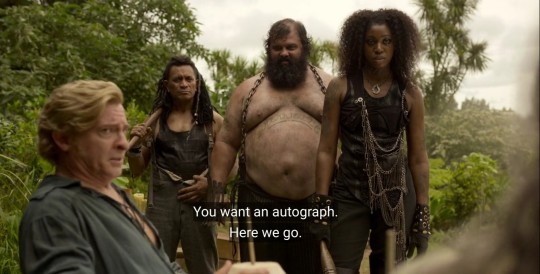
Jesus Christ... Lady 😍💯🔥
1 note
·
View note
Text
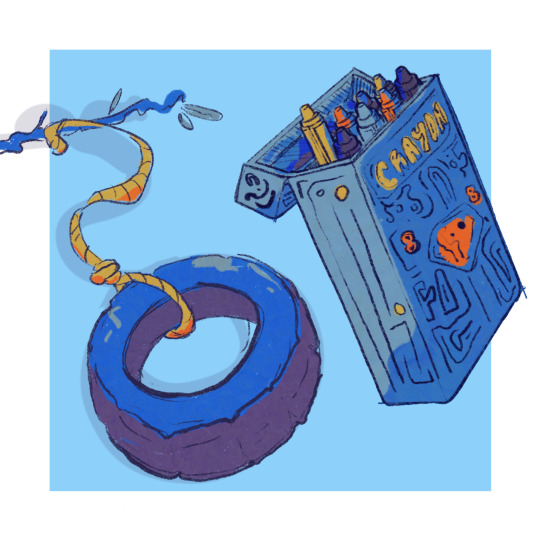
Day 37 and 38
Tire swing/box of crayons
I am running out of backlog drawings and I am going to die I think because of that. I need to draw more thingies
0 notes
Text
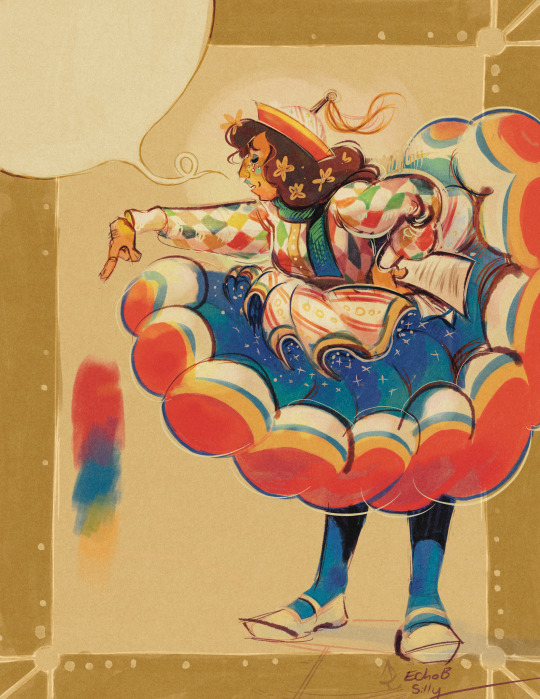
(Ooh, he’s in rehearsal!!!)
My entry for the Thespius Fashionista Zine :-D inspired by the Ballets Russes! 🌈🩰
#thespius green#great god grove#thespius fashionista zine#ggg#my art#queue#INSPIRED SPECIFICALLY BY THE BOOK#Ballet Russes: The Great Ballet Russes and Modern Art by Hiroshi Unno#still gotta finish it but what an incredible visual library of theatrical arts#after coloring the legs I realized hes kinda Julie Joyful with it too#GOOD#they should play toys together
630 notes
·
View notes
Text
Me: hm, I want something to put on the TV as background noise... Huh. Looks like YouTube is recommending something called The Last Unicorn. That's perfect, it's probably some old shitty animation that has aged poorly! I can watch it ironically!
Me, 2 hours later as the credits roll: *crying, cheering, buying the book, composing the songs*
Me, 2 weeks later: So I have compiled all of the quotes from the book that I think could make good tattoos, and also, HOW HAVE I NEVER LEARNED ABOUT HOW THE LAST UNICORN FUCKING SLAPS??? This gay-ass little fairytale fed my soul! Watered my crops! Transed my gender! Can't believe I heard of this story from youtube recommendations, of all places!!
#original#the last unicorn#tlu#peter s beagle#molly gru#schmendrick#schmendrick the magician#two of my favorite characters in anything right there in the center of the story! and I'm glad I saw the film first!#my reading ability has diminished due to trauma disability etc. but it seems like having a visual reference actually really helped!#no wonder i only ever want to read fan fic! turns out reading is not actually Superior to other types of Storytelling. it's just different.#to say otherwise is snobbishness I have been eminently guilty of in my life!#but like it is easier for me to consume tv and movies and that is fine actually. also that's why I'm doing a graphic novel lol#because i wanted to make something i would actually be able to read if i found it at a library. altho the audio book IS gonna be bomb#the audiobook is for visually impaired readers and anyone who wants or needs it! accessible stories for everyone! yeah!!#my gender was already transed but now I've gained an ADDITIONAL gender! which one? I'll never tell 😘#i am so powerful i have so much fuckin gender. my wife has no gender. and she is equally as powerful.#and also she has STUDIED THE BLADE#mostly zoro's blades from One Piece#normally YouTube recommends me shit movies like idiocracy or smth this is like if every day ur cat brought you a piece of rotten food and#then one day it brings you a BEAUTIFULLY ANIMATED TALE FEATURING MY BELOVED TWINK FUCK-UP WIZARD FRIEND AND MY ALL-TIME HOMEGIRL MOLLY GRU#and also it's soft and beautiful and funny and fucking weird!! i wrote melodies to the songs in the books on my ukulele
3K notes
·
View notes
Text



teeny falklers
#signalis#signalis falke#signalis adler#i need to work up da courage to do more pose stuff these days -3- expand my visual library ect.#for this i must conduct reaserch ... which means i need to read 2000 romance manga each day <- obviously#these are sketches yeah but eh .#myth.art#they can go in da art tag idc#im twisted
163 notes
·
View notes
Text
Spent a few free minutes here and there to slowly work through my Instagram bookmarks. My goal is to save each one locally, tag each in Adobe Bridge for ease of use, and to add these to my visual library I’ve been building since, let me see–June 2024.
Eventually, I will work through all of my social media bookmarks and actually stop using these altogether. There is enough space on my laptop for my own, and I think when you tag things yourself, they end up making sense to you.
Kind of like how you set up your own workshop.
1 note
·
View note
Text

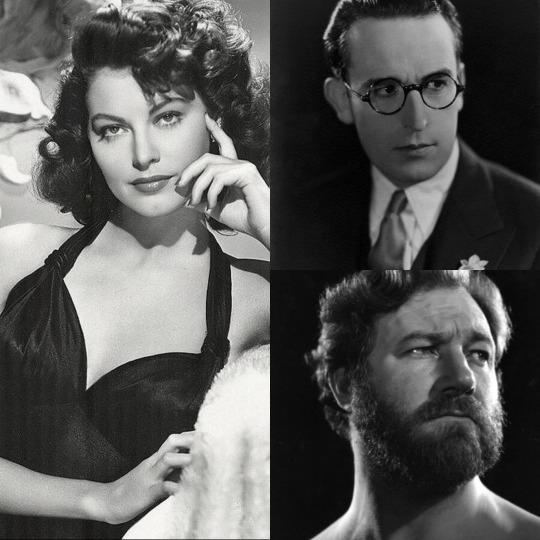

Stepping back in time, here's my honestly stellar casting ✨️
#BFUCU#visual library#image.png#Idc that they're not exactly contemporary with each other BTW in this scenario I have a time machine#CC Tinsley#Ricky Goldsworth#Banjo McClintock#Holly Horsely#Francesca Norris#Doctor Fear#G'Day#Legs Madej#Night Night Bergara#Filthy McNasty#Silent J#beefu's eleven
23 notes
·
View notes
Text
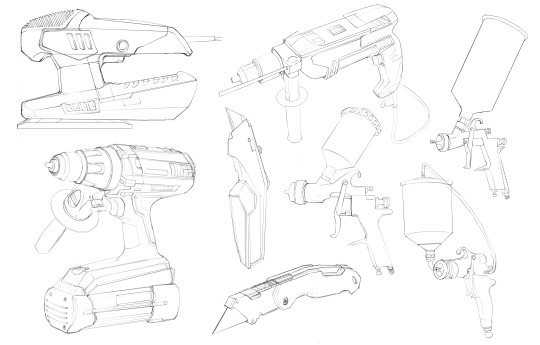



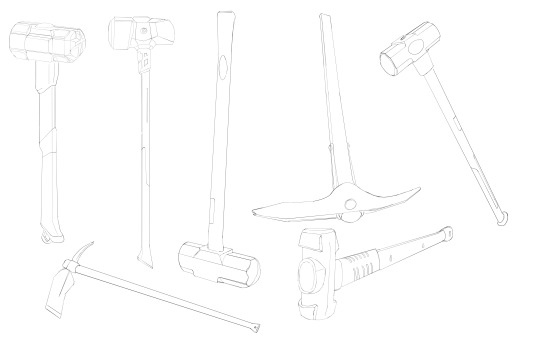
trying to build up my visual library, so enjoy some power tools c:
1 note
·
View note
Text
How AI DAM & Digital Toolkits Revolutionize Visual Libraries
In today’s digital age, visuals have become the backbone of every marketing strategy. A visual library plays a pivotal role in organizing, accessing, and managing a brand's visual assets. As brands increasingly leverage digital tools and artificial intelligence (AI), the integration of an AI DAM (Artificial Intelligence Digital Asset Management) system becomes crucial for streamlining workflows. In this article, we’ll explore how the visual library has evolved, the importance of AI DAM, and how utilizing the right digital toolkit can enhance your branding strategy.
What is a Visual Library and Why Does It Matter?
A visual library is a collection of digital images, videos, logos, and other multimedia files that a business or organization uses for its marketing, branding, and content creation. It acts as a central hub where all assets are stored, categorized, and easily accessible for any team member working on a project. Think of it as your brand’s visual memory—a curated archive that ensures consistency across various marketing materials, from social media graphics to advertisements and website design.
Having an organized visual library is more important than ever. With an influx of content being created every day, finding the right image or video for a campaign can be a daunting task. Without a reliable system in place, businesses run the risk of wasting time searching for assets or, worse, using outdated or incorrect visuals that can hurt their branding.
The Role of AI DAM in Organizing Your Visual Library
As your visual library grows, it can become increasingly difficult to manage. This is where AI DAM comes into play. AI-powered digital asset management solutions are designed to automate tasks like tagging, categorization, and searching, making it easier for teams to find exactly what they need in seconds.
AI tools can automatically categorize and tag assets based on their content, colors, style, and other attributes. This advanced system takes the guesswork out of searching for visuals and dramatically reduces the time spent manually tagging assets. Whether you’re managing a small team or a large creative department, AI DAM ensures everyone can access the right visual assets with ease.
The Benefits of AI DAM for Your Visual Library
Faster Asset Retrieval With AI-driven search capabilities, you can quickly locate specific assets based on keywords, colors, image recognition, and more. This significantly reduces the time spent sifting through files manually.
Consistency Across Platforms AI-powered digital asset management ensures that everyone on the team is using the correct and most up-to-date visuals. No more confusion about which logo to use for a specific campaign.
Smarter Tagging and Metadata AI algorithms are capable of automatically tagging and categorizing assets based on image recognition and metadata analysis. This ensures a higher degree of accuracy, making your visual library more effective.
Collaboration Made Easy AI-enabled systems make collaboration seamless, whether your team is remote or in-house. The visual library becomes a centralized repository where everyone can access, share, and update assets in real-time.
Digital Toolkits: The Key to Expanding Your Branding Efforts
When it comes to enhancing your visual assets, a digital toolkit is indispensable. It includes a variety of tools designed to help you create, edit, organize, and optimize visuals for various platforms. A comprehensive digital toolkit enables you to seamlessly integrate design and branding strategies into your day-to-day operations.
For brands to remain competitive in a crowded digital space, having access to the right tools is essential. The modern digital toolkit incorporates various design programs, content management systems, and collaboration platforms to ensure that every project can be executed efficiently.
Essential Tools in Your Digital Toolkit
Image Editing Software No digital toolkit would be complete without advanced image editing tools like Adobe Photoshop, Illustrator, or even AI-powered platforms that help with automated design tasks. These tools help enhance your visual library with high-quality imagery and graphics.
Social Media Graphics Generators The ability to create custom visuals for social media is essential in today’s marketing landscape. Digital toolkits offer templates and design tools specifically made for social media posts, making it easier to share your brand’s identity with the world.
Video Editing Tools As video content continues to rise in popularity, a digital toolkit should also include tools for video editing and animation. Platforms like Final Cut Pro or AI-driven video editors can help you incorporate your brand’s assets into dynamic and engaging video content.
Analytics Tools While having a visual library of assets is vital, understanding how your audience interacts with these visuals is just as important. Analytics tools integrated into a digital toolkit help you track the performance of visuals across various platforms, allowing you to optimize your branding efforts.
How AI DAM Enhances Your Digital Toolkit
When you combine the power of AI DAM with a digital toolkit, your branding efforts become even more streamlined and efficient. Here’s how AI DAM can take your digital toolkit to the next level:
Centralized Access to Visual Assets With AI-driven DAM solutions, all your brand’s assets are centralized in one place, allowing your digital toolkit tools to seamlessly access and edit them. This creates a smoother workflow between designing and organizing visuals.
Automated Content Optimization AI can automatically adapt visuals to suit the specifications of different platforms (for example, adjusting image sizes for Instagram, Facebook, and websites). This ensures that your visuals are always optimized for the best performance.
Faster Collaboration Collaborating on designs is faster when your visual library is integrated with AI tools. Whether your team is working in real-time or asynchronously, they can access the latest version of an asset without any confusion.
Advanced Personalization AI in DAM can help analyze user behavior and suggest customizations for visuals based on data-driven insights. This means that you can easily tailor your digital toolkit to create the most effective branding materials.
Best Practices for Using a Visual Library with AI DAM and Digital Toolkits
To make the most of your visual library and the technologies behind it, follow these best practices:
1. Categorize Your Assets Effectively
Even with AI tagging, it’s essential to categorize your assets properly from the start. Organize your visual library by project, theme, or type of asset (photos, videos, logos, etc.) so that you can find everything when you need it.
2. Utilize AI for Better Search and Retrieval
Take full advantage of the AI DAM system’s capabilities. Use keyword-based search or advanced filters to quickly locate assets. This will save your team time and ensure that the right asset is being used for the right project.
3. Keep Your Visual Library Updated
Your visual library should be constantly updated with new assets. As you create new materials, be sure to upload them into the system so that they remain part of your digital toolkit.
4. Foster Collaboration Across Teams
Make your visual library accessible to the entire team, not just the design department. From marketing to social media to PR, everyone should be able to easily access and utilize your brand’s visual assets.
5. Monitor Analytics for Insights
Use the analytics tools in your digital toolkit to gather data on how your visuals perform. This will help you fine-tune your visual library and make data-driven decisions for future campaigns.
Conclusion: A New Era of Visual Branding
As we continue to navigate the ever-evolving landscape of digital marketing and branding, tools like AI DAM and digital toolkits will remain at the forefront of efficiency and effectiveness. By integrating these technologies into your workflow, you’re not only enhancing the management of your visual library but also creating a seamless, automated, and powerful process that drives success in your branding efforts.
Embrace the future of branding by optimizing your visual library with AI-powered tools and a robust digital toolkit. These innovations will allow you to create, manage, and distribute visuals faster, ensuring your brand stands out in the crowded digital marketplace.
Ready to take your visual assets to the next level? Leverage the power of AI and a comprehensive digital toolkit to streamline your visual library management.
#brand portal#Digital toolkit#brand management tool#branding software#brand management software#Visual Library#AI DAM#Partner toolkit#media library software#tourism marketing tools
0 notes
